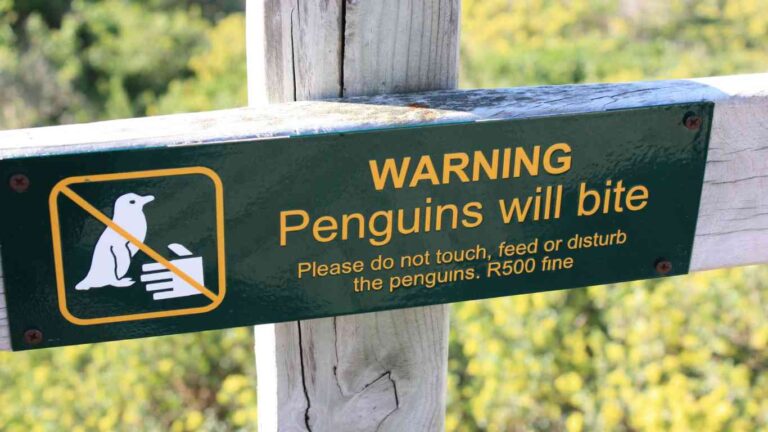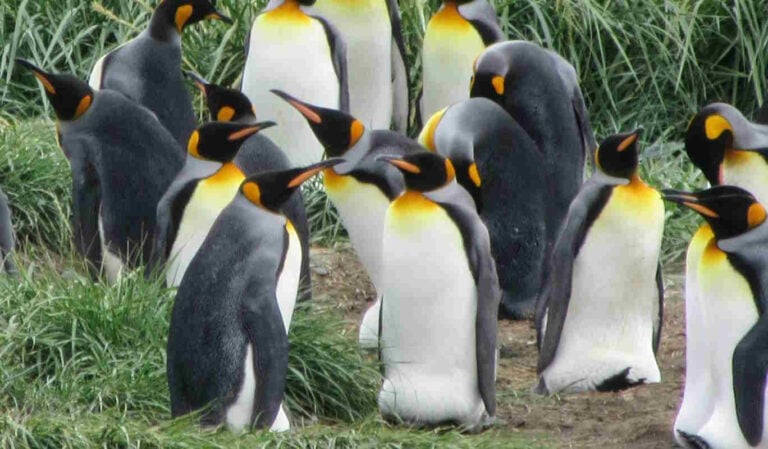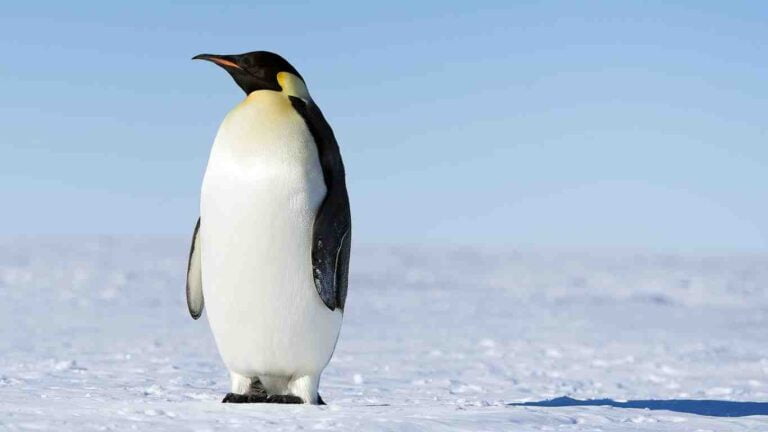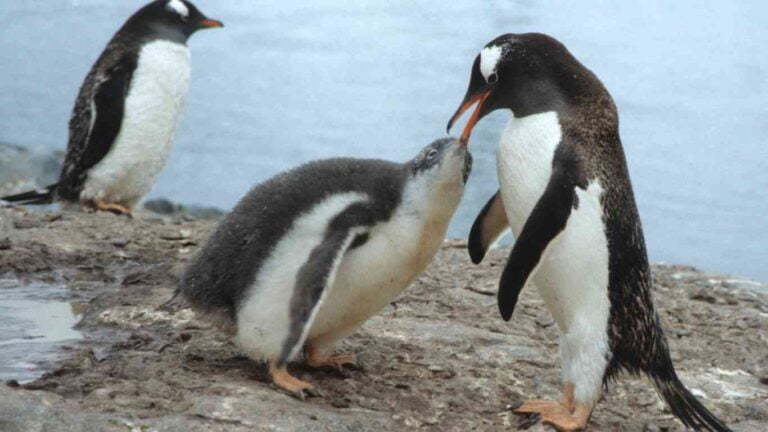9 Penguin Predators in Their Natural Habitat
Who Predates on Penguins? Penguins, those charming flightless birds mainly found in the Southern Hemisphere, are not immune to danger.
They, along with their chicks and eggs are targeted by various predators both on land and at sea.
Penguin Predators in the Wild
Orcas, leopard seals, sea lions, fur seals and sharks are penguin predators in the ocean, whereas Antarctic skua, foxes, snakes and rats prey on penguin chicks and eggs on land.
Penguins have developed strategies such as agile swimming and nesting in large colonies to evade these predators.
Here’s a list of most common animal predators that pose a threat to penguins in the wild.
1. Leopard Seals
Leopard seals are formidable marine predators and are perhaps the most infamous of the penguin’s natural enemies.
With powerful jaws and long, slender bodies, these seals are well-adapted for ambush predatory tactics under the ice.
They have a varied diet that includes fish and krill, but they are particularly known for their occasional attacks on penguins.
Leopard seals can swiftly snatch an unsuspecting penguin from the edges of an ice floe or pursue them with swift agility underwater.
2. Killer Whales (Orcas)
Another apex predator of the penguins are the killer whales, commonly known as orcas. Though orcas have varied diets depending on their ecological niche, some specialize in hunting marine mammals, including penguins.
Their coordinated hunting strategies and strong social structures allow them to cut off a penguin’s escape routes before one in the group makes the killing strike.
3. Skuas
Not all threats to penguins come from the sea. Indeed, birds such as skuas pose a hazard, particularly to penguin chicks and eggs.
These predatory birds are swift and aggressive, capitalizing on the breeding season to attack nests. Skuas are fearless, often taking eggs or young chicks right from under the watchful eyes of penguin parents.
Their aerial advantage allows them to strike quickly and escape before adult penguins can mount a defense.
4. Petrels
Some species of petrels too partake in this predatory cycle, seizing opportunities to prey upon vulnerable penguin young.
Although not as influential a predator as the skua, giant petrels can be significant opportunistic hunters.
These seabirds monitor penguin colonies for any signs of weakness, ready to swoop down and seize unattended chicks or eggs left exposed for even the briefest moment.
5. Sharks
While less frequently reported, sharks also count among penguin predators, particularly in warmer waters where the two species’ habitats overlap.
Species like the great white shark have been known to prey on penguins, taking advantage of the birds’ need to surface for air during their deep-sea foraging exploits.
Providing yet another threat in the water, sharks add to the litany of hazards these seabirds must navigate daily.
6. Fur Seals
Fur seals are among the primary predators of penguins. They hunt in ocean waters where penguins swim. Fur seals rely on their speed and agility in the water to catch penguins.
They usually target younger or weaker individuals. This interaction is common in sub-Antarctic regions. The fur seal’s diet varies by season, but penguins constitute a significant portion during breeding seasons.
7. Sea Lions
Sea lions are a significant predator of penguins, hunting them using tactics such as ambush and the chase-and-herd method, often striking from below.
Penguin hotspots for sea lion attacks are shallow waters near shores and ice floes, especially when penguins are entering or exiting the sea.
Sea lions, which tend to prey on the less experienced juvenile penguins, can have a considerable impact on penguin populations due to their consumption.
Penguin encounters with sea lions are typically violent and often fatal, with few penguins escaping once they become the target of an attack. Even if penguins escape, they might still sustain injuries.
8. Snakes
Snakes are often overlooked as penguin predators. Their impact is mostly felt on eggs and hatchlings.
These predators strike at penguin colonies on land, posing a significant risk to species that nest on the ground or in burrows.
Penguins have limited to no natural defenses against these quick-moving land predators. Snakes commonly feed on eggs and small chicks.
They can easily slither into penguin nests undetected. Conservation efforts sometimes focus on eradicating these invasive species to protect penguin colonies.
Despite efforts, sometimes nests are decimated by snake attacks, which is a pressing conservation issue affecting the long-term survival of penguin species.
9. Foxes
On certain islands of southern part of South America like the Argentinian and Chilean Patagonia penguins must also remain vigilant on land, where foxes can be predators.
These terrestrial hunters are particularly adept at searching out penguin nests and can decimate local populations if left unchecked.
Antarctic and Subantarctic islands with introduced fox populations have observed significant impacts on ground-nesting birds, including penguins.
The sly nature of foxes, coupled with their omnivorous diet, makes egg and chick predation a serious concern for these iconic birds.
On top of this, feral cats and rats, introduced to some islands where penguins breed, feast on eggs and young penguins.
Human introduced species unconsciously altered the survival dynamics many penguins once adapted to.
In response, conservation efforts often focus on removing or controlling invasive predators to protect vulnerable penguin colonies.
Final thoughts
Ultimately, the resilience of penguins against predation is an ongoing battle. The life of a penguin involves constant vigilance and awareness of their surroundings.
In their aquatic playgrounds as well as their nesting areas, they cannot afford to let their guard down. The existence of a multitude of predators necessitates that they stay ever watchful and skillful in both evasion and defense.
Through their natural instincts and behaviors, penguins adapt and survive despite the presence of these relentless hunters.
(Featured image by Rod Long on Unsplash)







